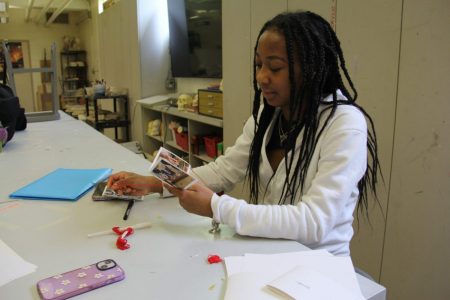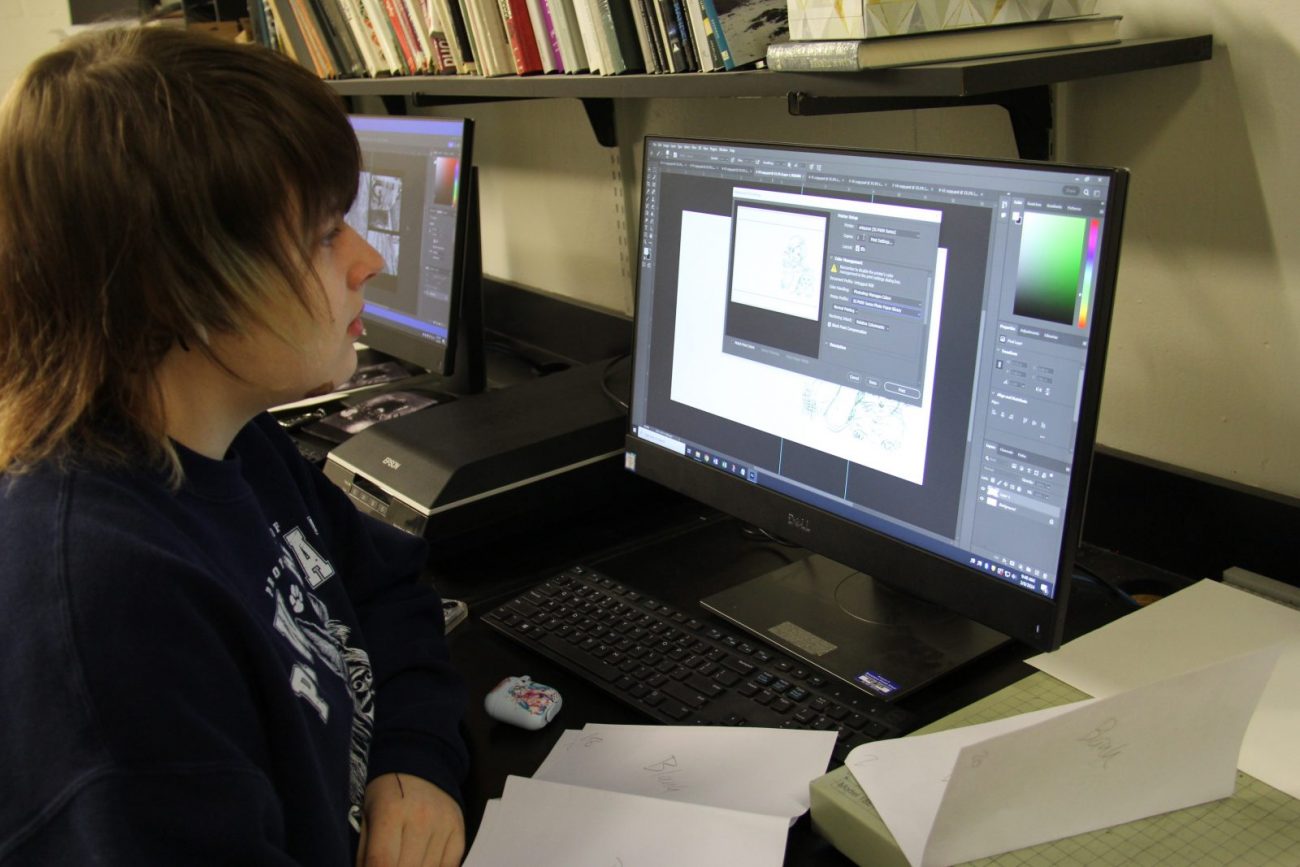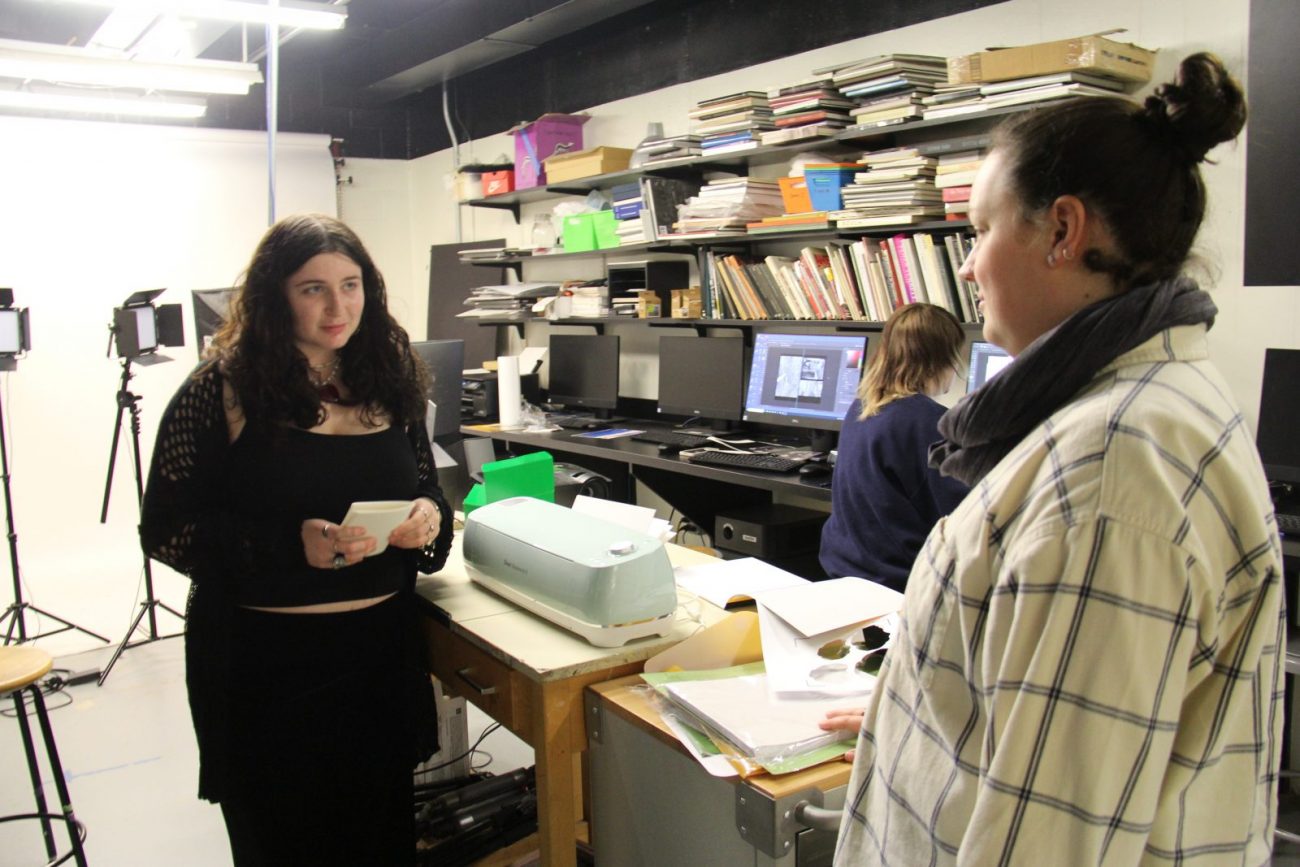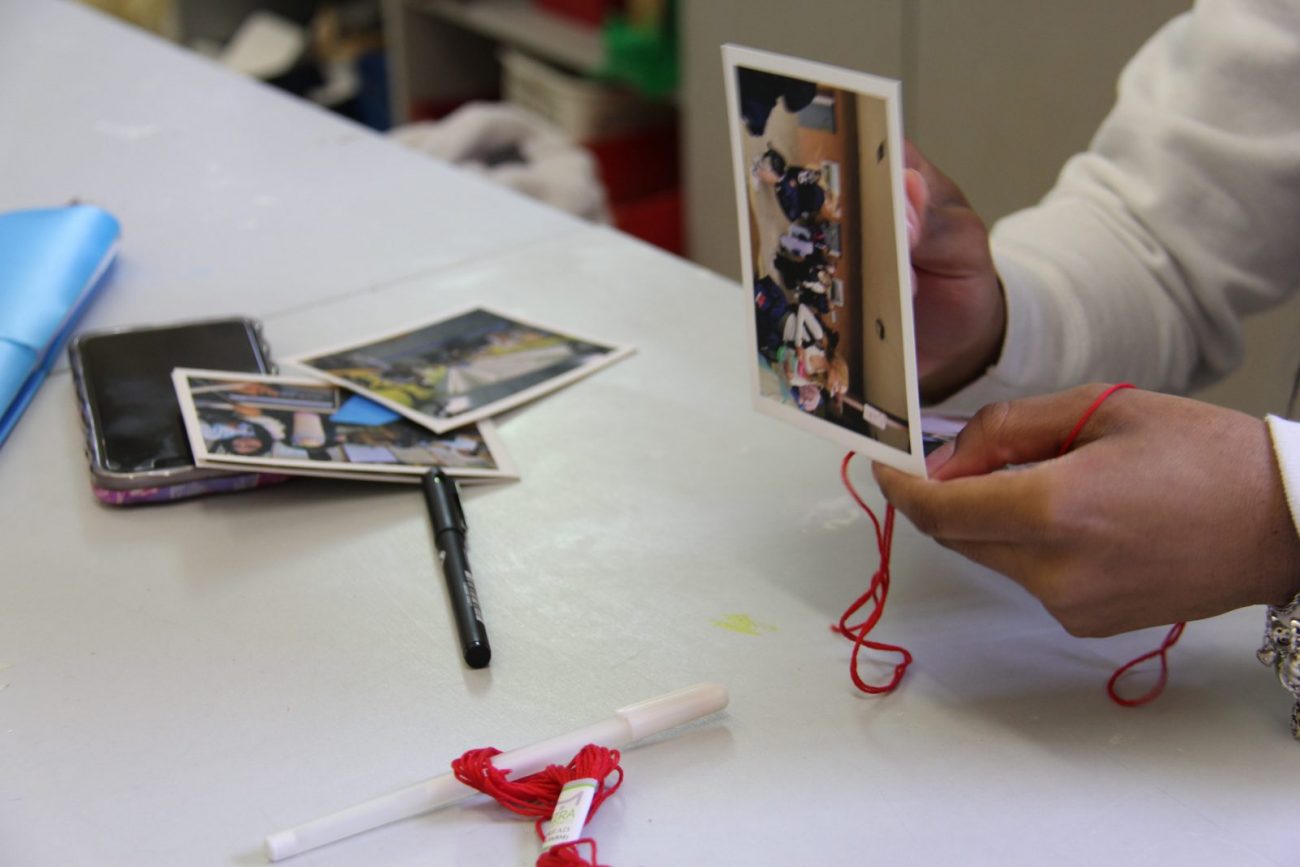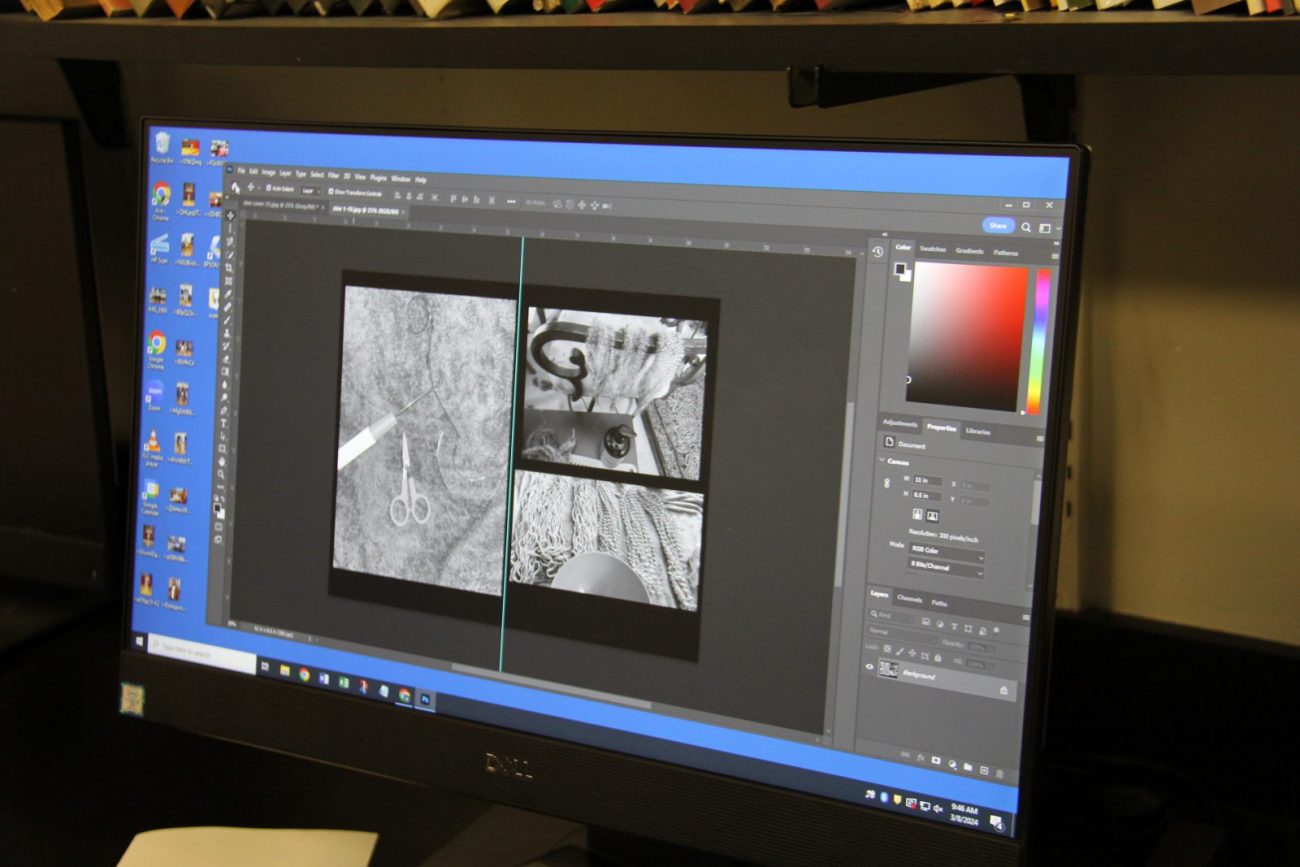Studio Art Explores Storytelling and Expression through Zines
By Dinah Megibow-Taylor ’24, Marketing and Communications Department Intern
One might think they stumbled upon an anachronism, a workshop out of the ’80s punk rock scene if they walk into the Art Room during Studio Art 1. The class, a full-year visual arts course open to 11th and 12th graders, is in the thick of their fourth large-scale project of the year: zine making. A zine is a handmade, typically small, production pamphlet, distinguished by its lack of an ISBN number, as opposed to other publication types. “It’s certainly not short for [magazine],” explained teacher and Arts Department Chair Ailsa Moriuchi. Instead, it’s short for ‘fanzine,’ an element of the 1930s science fiction sub-culture and later the punk rock landscape of the ’80s and ’90s.
During this unit, students must create their own zine from start to finish. This process starts with students learning about the history of the zine and a look at Ailsa’s personal collection, comprising zines of friends, former students, purchased zines, and her own. Then, students learn about folding, stitching, and stapling, and after students are acquainted with these skills, they move into content production. Illustrations and photographs are the two mediums that students use, and after their content is created, they focus on layout, using software like Adobe Photoshop to complete this process. To finish, students choose their desired paper and print their zines.
Each zine tells a story; students use their photographs and illustrations to express an artistic vision representing students’ passions or an aspect of their identity, or they can simply embrace the opportunity to be free-formed and creative.
The class operates as a precursor for higher-level art sequences, most notably AP Studio Art and Studio Art 2. “The class is taught concurrently with AP Studio Art and Studio Art 2,” said Ailsa. “So we’re really building a community; we do lots of critiques. That’s how we assess everything. So you are also able to be in on AP critiques and have students critique your work.”
For some students, notably 12th graders, Studio Art 1 is an opportunity to build a portfolio and explore a passion that has lied dormant. It is an opportunity “for those who say, ‘I really want to do art,’ or, ‘I want to become a lifelong artist, even though that’s not my passion in college.’ Many students come in and go, ‘I’m not really going to do art in college,’” but they leave with renewed passion, and in some cases, notes Ailsa, they find success within undergraduate study of visual arts.
In a typical year, Studio Art 1 engages in four or five long-term projects. This year, students began with drawing, then experimented with reduction printmaking, “which is when you’re using one block and cutting it away and doing many, many layers,” explained Ailsa. Students then took part in a fibers unit, where they made fiber masks. Zines are the students’ penultimate project of the year, and to end, students will begin an identity unit and create independent projects, preparing them for either AP Studio Art, Studio Art 2, or undergraduate art courses.
The class’s small size allows Ailsa to tailor the curriculum each year to fit the needs of her students. “I found that all of my students felt really comfortable in painting this year, so I didn’t do a painting unit. This is a year of exploring lots of different materials that could be either a culminating experience if you’re a senior, or preparation for AP Studio Art as a junior. So we try lots of different things.”

